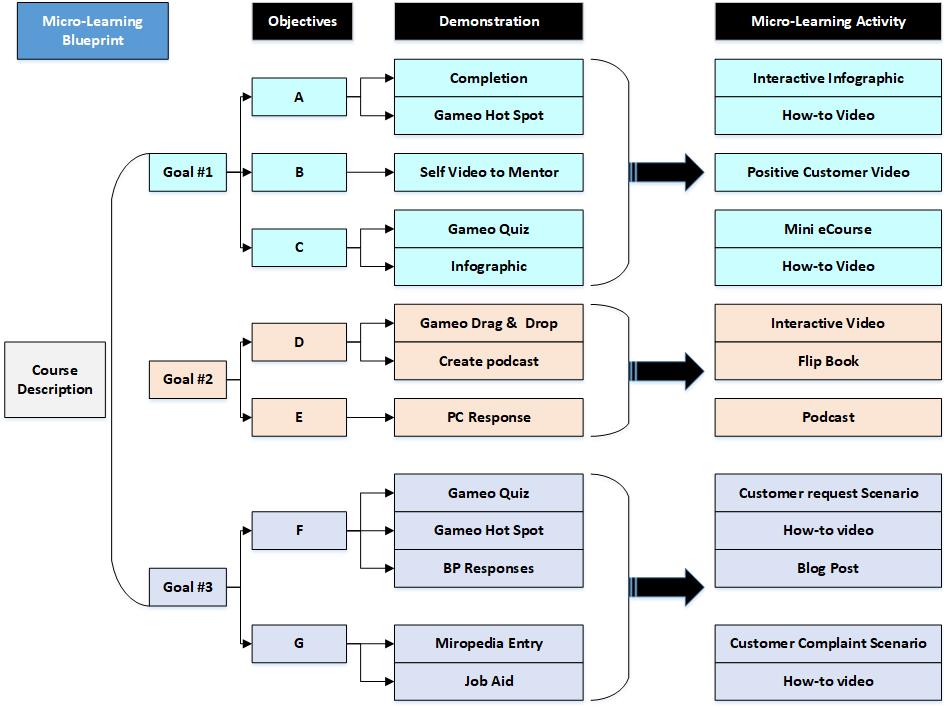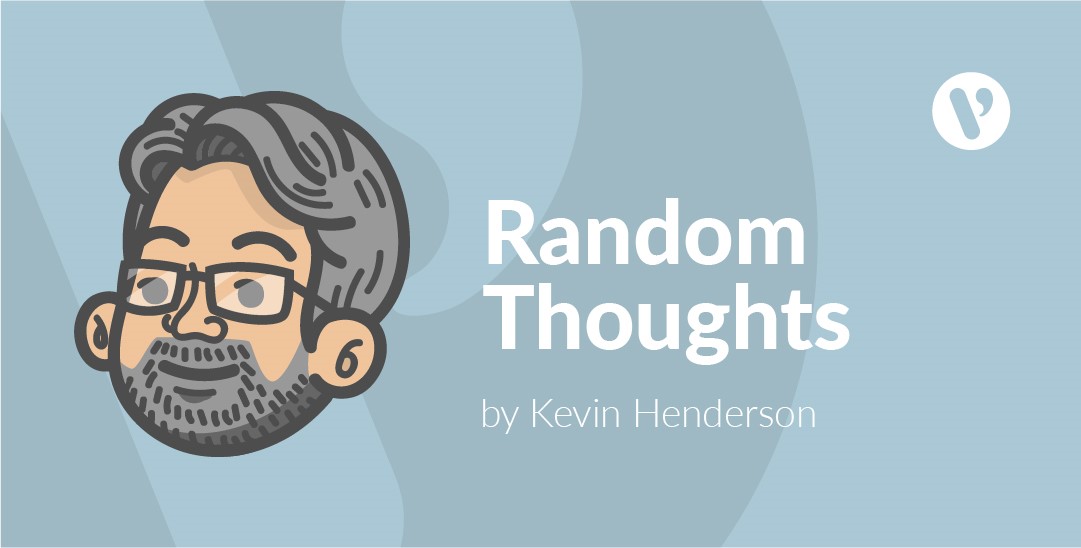Developing Formative Assessments for eLearning
As trainers, how do we ensure that we are assessing for higher levels of learning in the e-Learning environment?
Formative assessments are tests or evaluations that take place throughout a course and provide feedback to the student in an ongoing loop, allowing them to build on their knowledge and improve. Examples are quizzes, assignments, or research papers.
There are three developments in cognition that are important to consider when looking at creating Formative Assessments for eLearning.
- Bloom’s Taxonomy (1956)
- Andrew Churches’ Revised Bloom’s Digital Taxonomy (2007)
- P. Guilford’s Convergent and Divergent Cognitions (1969)
Bloom’s Taxonomy
Benjamin Bloom was an educational psychologist who is best known for his 1956 book, Taxonomy of Educational Objectives, Handbook 1: Cognitive Domain. The book became the definitive guide for assessment in education because it provided a way to assess a student’s ability to meet educational objectives. It became known as Bloom’s Taxonomy.
Bloom felt that a person’s learning fell into three domains: Affective (emotional), Psychomotor (physical) and Cognitive (thinking). He divided each of these domains into skills levels from lower order to higher order processes where each level was dependent on first achieving the skills from the level below it. Here we will focus on the Cognitive Domain.
Bloom’s Taxonomy: Cognitive Domain
| Skills Level | Description of Level |
| Knowledge | Recall, or recognition of terms, ideas, procedure, theories, etc. |
| Comprehension | Translate, interpret, extrapolate, but not see full implications or transfer to other situations, closer to literal translation. |
| Application | Apply abstractions, general principles, or methods to specific concrete situations. |
| Analysis | Separation of a complex idea into its constituent parts and an understanding of organization and relationship between the parts. Includes realizing the distinction between hypothesis and fact as well as between relevant and extraneous variables. |
| Synthesis | Creative, mental construction of ideas and concepts from multiple sources to form complex ideas into a new, integrated, and meaningful pattern subject to given constraints. |
| Evaluation | To make a judgment of ideas or methods using external evidence or self-selected criteria substantiated by observations or informed rationalizations. |
From: Bloom, B. S.; Engelhart, M. D.; Furst, E. J.; Hill, W. H.; Krathwohl, D. R. (1956).
Bloom’s Taxonomy in the Digital Age
Despite quickly becoming the definitive reference tool for educators and trainers, Bloom’s Taxonomy was not without criticism. Some debated the ordering of the hierarchy, suggesting Evaluating comes before Analyzing. As the decades went on, others questioned if it was still relevant and updates were proposed. With the increase in digital technologies and the advent of eLearning, the most recent revision has been offered by Andrew Churches, who updated the taxonomy in 2007 to reflect these fundamental shifts in the learning environment. He called it Bloom’s Digital Taxonomy.
Adapted from: Churches, A. 2007

Convergent and Divergent Cognition
Another important concept that can enrich our understanding of the types of thinking in Bloom’s Taxonomy (and what we need to assess for) is Convergent and Divergent Cognition (J.P. Guilford, 1969).
Convergent thinking applies when there are pre-existing correct answers. The person is working with knowledge and concepts that have been covered in the course material or are generally known to exist. For example, a remembering question to name the parts of a trumpet.
On the other hand, divergent thinking is cognition that happens when there are no pre-existing correct answers. The thinking creates new knowledge from existing knowledge. For example, a creating question to compose a Trumpet Prelude from their knowledge of trumpet music.
Mapped to Bloom’s Digital Taxonomy
| Convergent | Remembering
Understanding Applying Analyzing |
| Divergent | Evaluating
Creating |
Developing eLearning Formative Assessments
How do we use these concepts to create effective assessments in the eLearning environment?
The following diagram shows the blueprint of an eLearning course and the relationship of “Objectives” to “Demonstration of Learning.”

Formative assessments are mapped to the Enabling Objectives or Demonstration of Learning sections of an eLearning program. By doing so, the instructor ensures that the student is learning the concepts set out in the planning of that module or course. When the student successfully completes the assessment, it provides both the learner and trainer with feedback, showing knowledge they have gained, skills developed, and any areas that need to be further developed in that learning objective. Each successful demonstration of learning builds toward the overall learning for that student.
Formative assessment needs to take into consideration the level of proficiency that needs to be demonstrated. For example, if students are required to demonstrate knowledge-level proficiency of, for example, the capital cities in the EU, an appropriate assessment might be a quick quiz asking them to list the capitals. On the other hand, if students need to demonstrate synthesis level proficiency of identifying the risk of food borne illness in a restaurant, the assessment would require students to access a number of sources of information to complete the assignment.
Examples of eLearning Formative Assessments
The following examples show how we can assess for proficiency at all levels of cognition.
Convergent Cognition (when there is a pre-existing correct answer)
REMEMBERING
Retrieving: Learners demonstrateknowledge from memory by finding the answer in reference material.
| Example |
| Instructor Led |
| Open book quiz, identifying items on map/visual reference |
| eLearning |
| Bookmarking sites in internet searches, searching internet, searching Google to find concepts |
Recall: Learners demonstrate knowledge from memory by remembering the knowledge.
| Example |
| Instructor Led |
| Fill-in-the-blank, short answer, essay, oral test, crossword puzzle |
| eLearning |
| Social networking, visual identification, fill in the blank, crossword puzzle, video followed by questions |
Recognition: Learner demonstrates knowledge from memory through identifying an answer.
| Example |
| Instructor Led |
| Multiple choice, True or False, matching, highlighting answers, sorting |
| eLearning |
| Bookmarking, drag and drop, matching, multiple choice, True or False, sorting game |
UNDERSTANDING
Contextual: Learners can not only recall knowledge, but can explain it in context to someone else.
| Example |
| Instructor Led |
| Fill-in-the-blank, short answer, essay, oral test, computational questions, answer and reason, ordering |
| eLearning |
| Blog journaling, commenting on social media, video presentation |
APPLYING
Training: Learners are starting to practice tasks, apply new skills, and correct mistakes.
| Example |
| Instructor Led |
| Problem-solving questions |
| eLearning |
| Uploading their own content, editing others’ content, problem solving |
ANALYZING
Differentiating: Learners distinguish relevant material from irrelevant material/important from unimportant information.
| Example | |
| Instructor Led | |
| Compare and contrast, summarizing texts | |
| eLearning | |
| Participating in simulations, linking, tagging, validating | |
Organizing: Learners determine how elements fit or function within a structure.
| Example | |
| Instructor Led | |
| Organizing lists/items, outlining, solving problems | |
| eLearning | |
| Gaming, participating in simulations | |
Attributing: Learners determine a point of view, bias, values, or underlying intent within presented material.
| Example | |
| Instructor Led | |
| Critical response, fact vs. opinion, short answer, essay | |
| eLearning | |
| Linking and tagging | |
Divergent Cognition (when there are no pre-existing correct answers)
EVALUATING
Checking: Learners detect inconsistencies within a process; detect the effectiveness of a procedure.
| Example |
| Instructor Led |
| Experimenting, testing, finding the error |
| eLearning |
| Moderating discussions, testing ideas/created work |
Critiquing: Learners detect the appropriateness of a procedure for a given problem.
| Example |
| Instructor Led |
| Critiquing, judging |
| eLearning |
| Research and recommendations, participating in discussion boards, blogs and vlogs |
CREATING
Generating: Learners come up with alternative hypotheses based on criteria.
| Example |
| Instructor Led |
| Designing, filming |
| eLearning |
| Creating videos, wikis, podcasts, blogs and vlogs, directing, producing |
Planning: Learners devise a procedure for accomplishing a task.
| Example |
| Instructor Led |
| Project planning, proposal writing |
| eLearning |
| Planning videos, wikis, podcasts, blogs and vlogs |
Producing: Learners invent a product.
| Example |
| Instructor Led |
| Constructing, inventing |
| eLearning |
| Creating videos, wikis, podcasts, blogs and vlogs |
Adapted from: Anderson, L. W. & Krathwohl, D. R. (2001).
References
Bloom, B. S.; Engelhart, M. D.; Furst, E. J.; Hill, W. H.; Krathwohl, D. R. (1956). Taxonomy of educational objectives: The classification of educational goals. Handbook I: Cognitive domain. New York: David McKay Company.
Guilford, J.P. (1967). The Nature of Human Intelligence. New York: McGraw-Hill.
Churches, A. 2007, Educational Origami, Bloom’s and ICT Tools (http://edorigami.wikispaces.com/Bloom%27s+Digital+Taxonomy )



